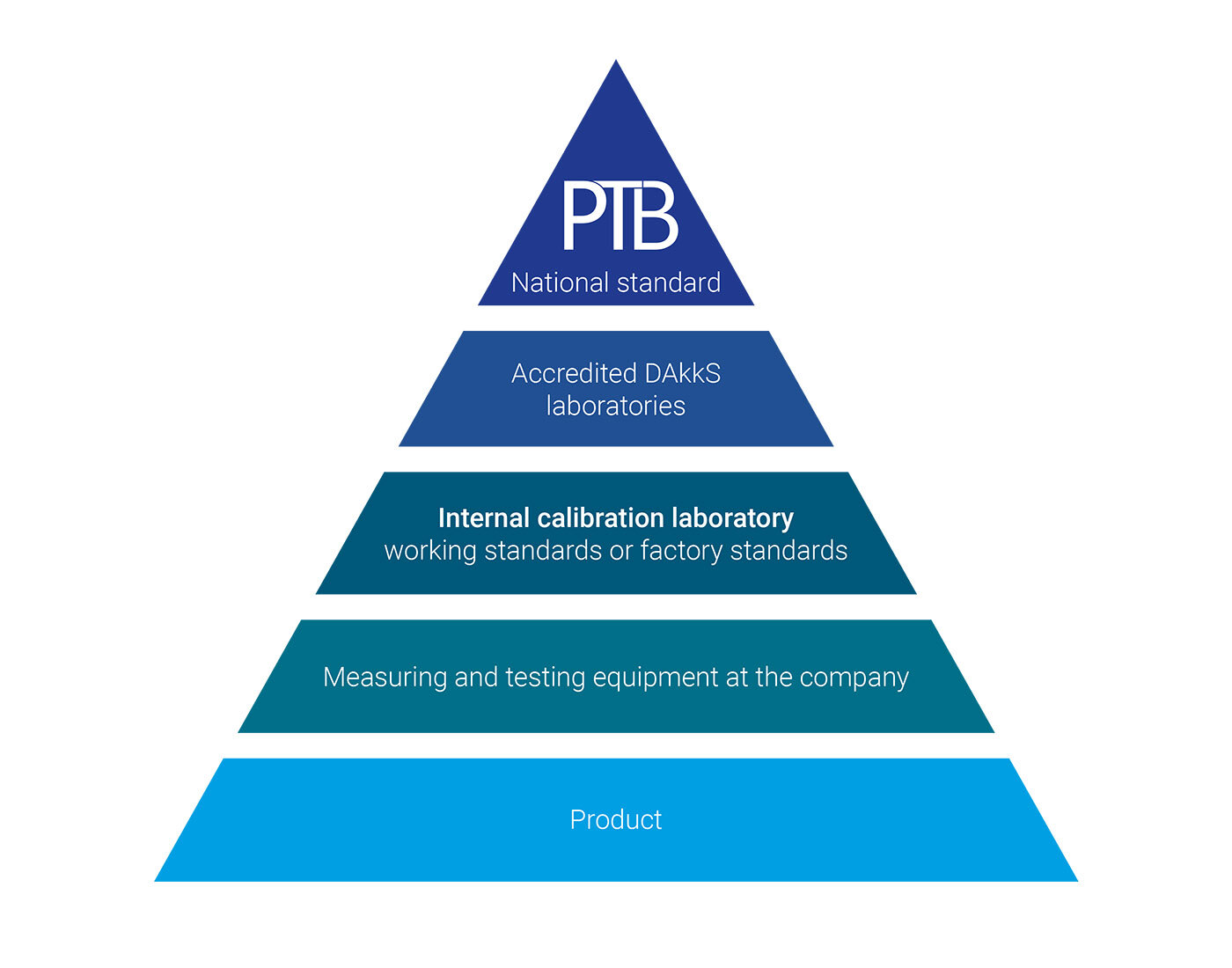Calibration Levels and Traceable Measurement Results


All calibrations have one thing in common: during the calibration, the deviation of the device under test (DUT) is determined and documented in a calibration certificate – that’s the calibration process in a nutshell.
Various levels of calibration standard are available in order to determine the accuracy of the device under test (DUT). These levels can be easily visualised as a calibration pyramid.

The higher you climb in the pyramid, the more accurate the calibration result becomes. At the top of the pyramid is the NMI, the National Metrology Institute. The leading institute for metrology in Germany is the Physikalisch-Technische Bundesanstalt, where exceptionally accurate calibrations can be carried out which can be traced directly to the national standards of the respective country. Calibrations at this level, however, are the most time-intensive and costly, and they take the longest to get results.
One step below the NMI are the accredited laboratories. In Germany, these are the DAkkS laboratories (German Accreditation Body). These are directly accredited by the NMI and offer traceable calibrations.
For calibrations at both the NMI and in an accredited laboratory, the devices under test have to be sent to an external laboratory for calibration. The duration, cost, accuracy and the downtime of the device under test are high, as the device isn’t available during the whole of the calibration process, which can take several weeks.
Both levels – NMI and accredited laboratory – provide fully traceable calibration results according to the national and international standards.

At the level below the accredited laboratories, the calibration process differs in several key respects. At this level, we are talking about in-house company laboratories. These are run by the companies themselves and are not affiliated with official bodies.
When we think of calibration here at SIKA, we are usually talking about calibration at this level. This is where the majority of calibrations take place. The accuracy which can be achieved with SIKA calibrators, for example, fulfils the requirements of this level exceptionally well. In addition to this, with calibration equipment such as our temperature calibrators, the calibrations can be carried out at the company itself. This leads to significantly lower costs per calibration in comparison with calibration at an accredited laboratory or at the NMI.
The downtime of the device under test is also drastically reduced. We’re talking a matter of hours, rather than weeks or even months.
At most in-house company laboratories, it is not a given that the measurement results will be traceable. With a SIKA calibrator, that doesn’t have to be the case: each SIKA calibrator can be optionally supplied with a DAkkS calibration certificate, for example according to DKD-R5-4 for a temperature calibrator.
SIKA itself has a DAkkS accredited laboratory. This DAkkS calibration certificate enables you to trace the calibration of the SIKA calibrator. Each SIKA calibrator is also supplied with a calibration certificate which can be traced back to our factory standards.